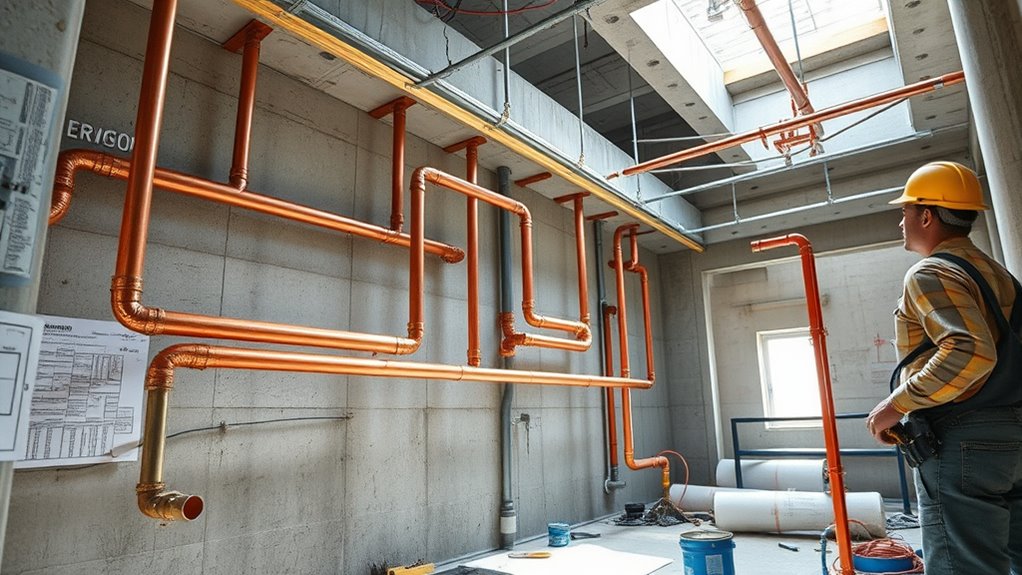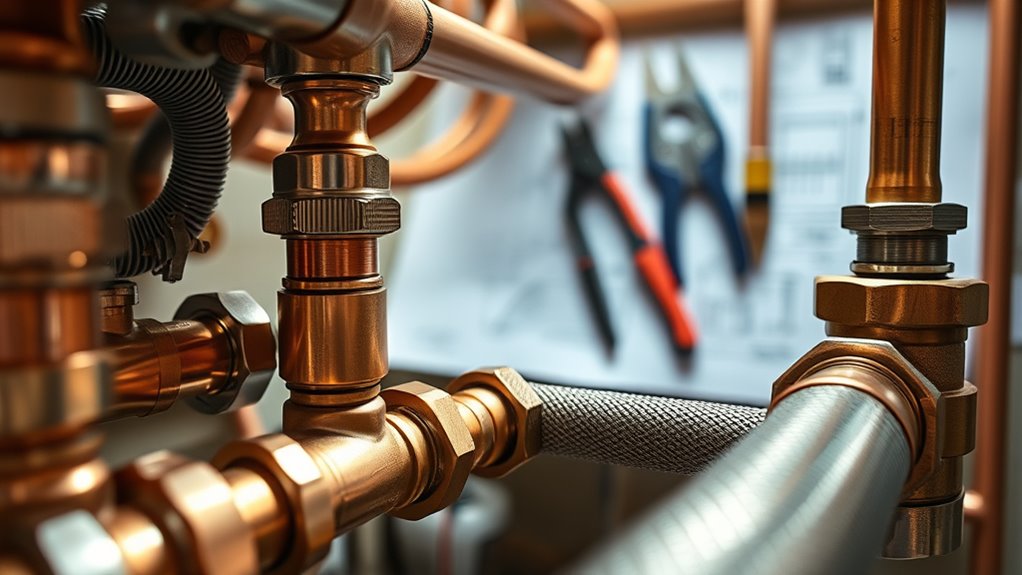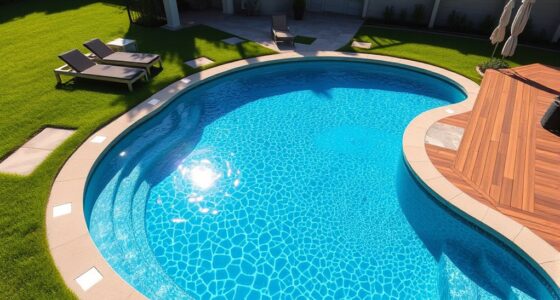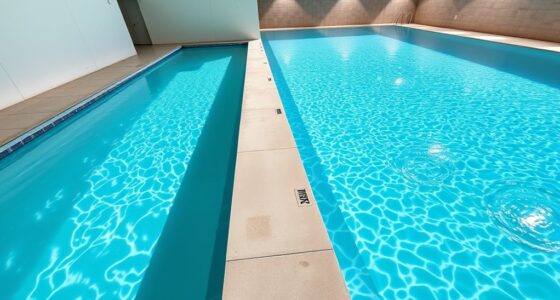Your installation costs depend heavily on water pressure levels and your choice of pipe materials. High or low pressure can require extra equipment or adjustments, adding to expenses. The type of pipes—copper, PVC, or PEX—also impacts costs, with more durable options often costing more upfront but saving money long-term. Factors like system complexity and project size matter too. To discover ways to keep costs manageable and choose the best options, keep exploring these key points.
Key Takeaways
- Water pressure levels require assessment; adjustments or special equipment can increase installation costs.
- Pipe material choice (copper, PVC, PEX) impacts both material and labor expenses.
- System complexity, pipe size, and building type influence overall installation costs.
- Additional components like pressure-reducing valves add to project expenses.
- Proper planning reduces future repair costs and ensures system longevity.

Have you ever wondered how water seamlessly moves through your home or workplace? It’s a marvel of plumbing and hydraulics that hinges on a few key factors, especially water pressure and pipe materials. These elements don’t just influence how well your water flows; they directly impact the cost of installing or upgrading your plumbing system. Understanding this connection can help you make smarter decisions when planning repairs or new installations.
First, consider water pressure. It’s what pushes water through your pipes and fixtures, ensuring you get a steady stream when you turn on the tap. Low water pressure might seem minor, but it can cause significant issues, like weak flow or inconsistent supply, which often means you’ll need additional work to correct the problem. High water pressure, on the other hand, can damage your pipes over time and may require pressure-reducing valves to prevent leaks or bursts. When contractors evaluate your plumbing system, they factor in the existing water pressure because it influences the type of piping and fittings needed. If your pressure is unusually high or low, fixing or adjusting it can add to the installation cost. This is especially true if specialized equipment or additional components are necessary to regulate water flow. Proper water regulation is essential to prevent future damage and ensure system longevity.
Next, pipe materials play a significant role in determining installation costs. Different materials vary in price, durability, and ease of installation. For example, traditional copper pipes are reliable and long-lasting but come with a higher upfront cost and require skilled labor for proper fitting. PVC and PEX pipes are more affordable and easier to work with, which can reduce labor costs. However, their suitability depends on your specific needs, local codes, and water conditions. Some pipe materials are better suited for certain environments or water qualities, meaning choosing the wrong type could lead to future repairs or replacements, increasing overall costs. Additionally, the size and length of pipes needed for your project impact the total expense. Larger or more complex piping systems, especially in commercial or multi-story buildings, naturally cost more due to material requirements and labor.
Frequently Asked Questions
How Long Does a Typical Plumbing Installation Take?
A typical plumbing installation takes about one to three days, depending on factors like pipe material and complexity. If you choose durable materials like copper, it might take longer and increase labor costs. The size of your project also affects the timeline; larger or more intricate systems require more time. You should plan accordingly, and discuss with your plumber to get a clearer estimate based on your specific needs.
What Permits Are Needed for Plumbing Work?
Imagine your plumbing project as a journey through a guarded castle. You need a permit to pass through each gate, making certain you’ve met permit requirements and licensing regulations. Typically, you’ll need building permits for new installations or major repairs. Check local codes, as requirements vary by area. Securing these permits guarantees your work is legal, safe, and ready to withstand any inspection, much like passing through a well-guarded gate confidently.
Can I Upgrade My Plumbing System Myself?
You can attempt DIY plumbing upgrades, but it’s not always advisable. If you have experience with plumbing tools and understand local codes, you might handle simple tasks. However, complex projects often require professional skills to guarantee safety and code compliance. Improper DIY plumbing can lead to leaks or damage, increasing costs. When in doubt, consult a licensed plumber to avoid costly mistakes and ensure your plumbing system functions properly.
How Often Should Plumbing Inspections Be Scheduled?
You should schedule plumbing inspections at least once a year to catch potential issues early. Depending on your home’s age and usage, more frequent inspections, like every six months, might be necessary. Follow your maintenance schedules closely, especially if you notice leaks, low water pressure, or unusual noises. Regular inspections help prevent costly repairs and make certain your plumbing system stays in top shape, saving you money long-term.
What Are Signs of Plumbing System Failure?
A stitch in time saves nine, and spotting signs of plumbing failure early can save you money. Watch for persistent leaks, decreased water pressure, or unusual noises, which could indicate pipe corrosion or hidden leaks. Regular leak detection checks help catch issues before costly repairs. If you notice water stains or mold, address them immediately — these signs signal your plumbing system might be failing and needs prompt attention.
Conclusion
Understanding what influences installation costs helps you navigate your plumbing project with confidence. Factors like material choices, project complexity, and labor rates all shape the final price tag. Think of it as assembling a puzzle—you need the right pieces in place for a smooth fit. By being aware of these elements, you can better plan and budget, ensuring your plumbing system flows seamlessly without draining your wallet. Knowledge is the key to keeping costs in check.








